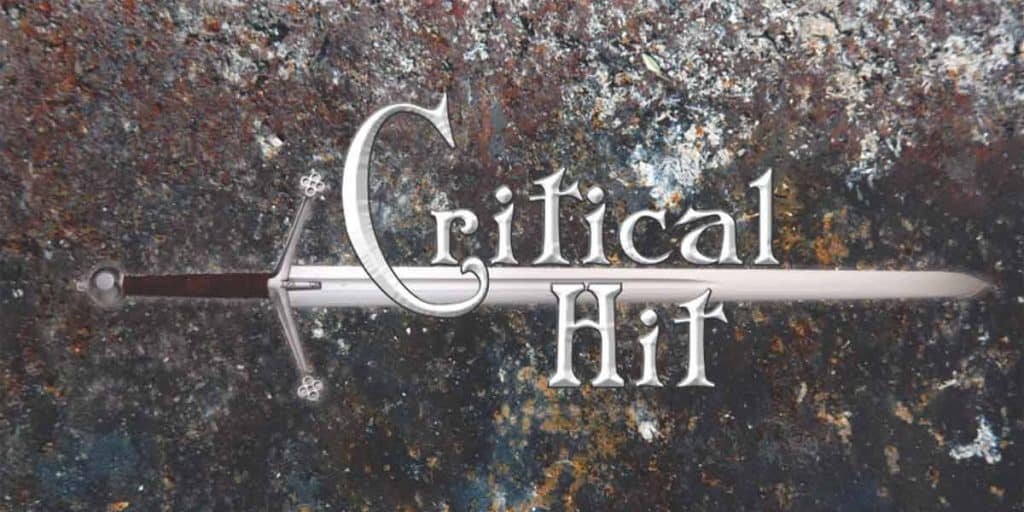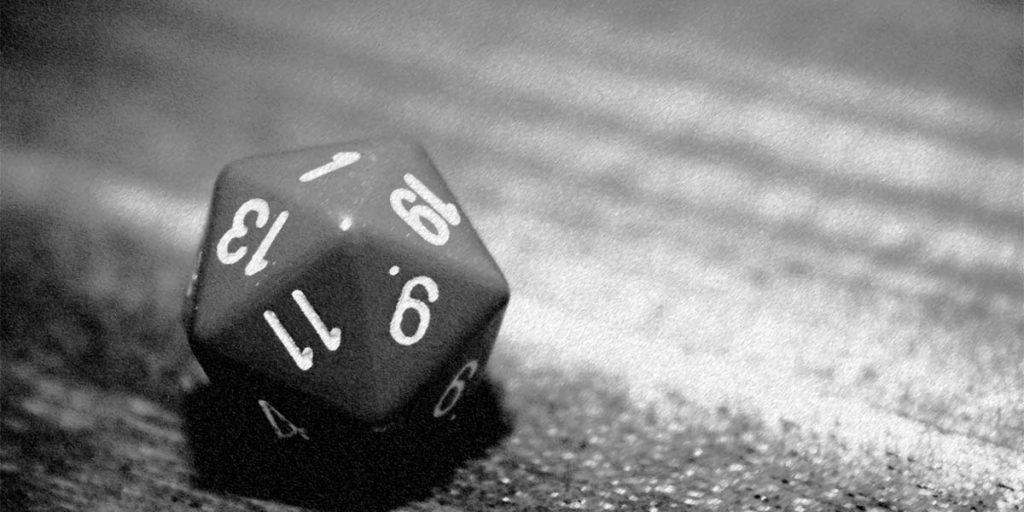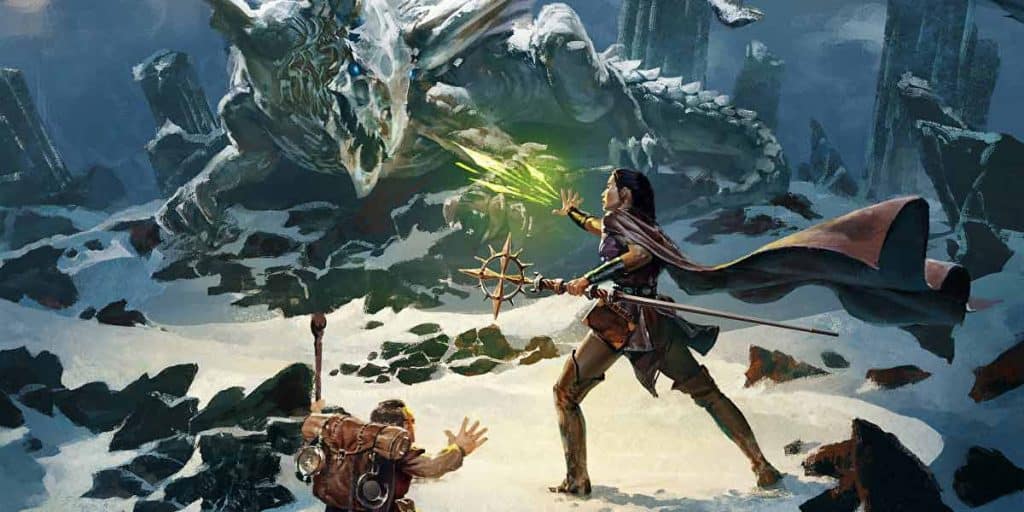D&D Critical Hit 5E | The Complete Guide

If you are a seasoned DnD player, you know that rolling a 20 is kind of a big deal. Rolling a 20 generally means success. However, it’s an utter horror if the Dungeon Master (DM) rolls a 20. People who first started out as DnD players would agree that DnD 5e is slightly different and more complicated than previous editions. The game has undergone significant improvements with the fifth edition. And when we say improvements, we mean additions.
There are a lot of new terms to familiarise yourself with in DnD 5e. One such is the DnD Critical hit 5e. If you remember, rolling a 20 when in combat usually means that you have been stuck in an artery or the enemy’s jugular vein. However, critical hits in DnD 5e work differently than the way they did all the earlier editions.
If you’re unaware of what critical hit 5e is and how critical hits work in DnD 5e, then we are here for you. In this article, we will walk you through everything about critical hit 5e and what they have to offer in DnD 5e.
What Is A DnD Critical Hit 5e?

As we mentioned earlier, a critical hit 5e occurs every time you roll a 20 on a 20-sided die. When you roll a 20 on a 20-sided die, it means that you have rolled a 20 without making use of any modifiers whatsoever. In simple words, a critical hit 5e refers that you have directly dealt damage to your enemy by attacking his artery or the jugular vein.
Every time you score a critical hit 5e, you get a chance to roll the dice again for the attack’s damage against the target. When you score a critical hit 5e, it means that you automatically hit your target irrespective of the class of armor the target possesses. In addition, every critical hit you roll ultimately doubles the damage dice on your roll. To make it easier for you to remember, every critical hit will double all the dice.
However, note that rolling a critical hit doubles your dice and NOT the damage modifier. You double the actual physical damage done by the die roll and then add the regular modifier into that total. In addition to automatically hitting the target and doubling your dice damage, critical hits are also vital in helping you gain an additional bonus by death-saving throws. In such a case, you gain a single hit point and also regain consciousness.
D&D 5e Critical Rules & Critical Hit 5e Skills Check
According to the written rules, rolling a 20 on a 20-sided dice on ability or a skill check does not have any additional effect or damage. However, you can refer to page 242 of the Dungeon Master’s Guide to gain further information on these abilities and skills to add more critical rolls. Also, the game’s written rules clearly suggest that hits upon critical rolls only apply to the attack mods in combat. This means that you cannot use critical rolls on ability and skill checks.
According to the Dungeon Master’s Guide,
“Rolling either a 20 or a 1 on an ability check or a saving throw does NOT have or add any effect. However, you can choose to use these rolls when trying to adjudicate the outcome of the game. As the DM, it is on you to decide how these rolls affect the game. An easy and simple approach is to either increase the impact or complete failure.”
For example, if your character rolls a 20 on a 20-sided dice, they are liable for receiving many things such as information from Intelligence check or an Athletics check to allow them to do a long jump.
Also Read:
What Is A Critical Miss?

As we mentioned earlier, rolling a 20 on a 20-sided dice means that your character has scored a critical hit. In contrast, if your character rolls a natural 1, then it means you have scored a critical miss. A critical miss works the same as the critical hit but in the reverse order if you look carefully.
If your character scores a natural 1 on the attack, it ultimately means that your character missed that attack. In case of a critical miss, it doesn’t matter how high your attack modifier is, and the end result only means that you have missed your attack unless you are using homebrew rules in which case, you would have to follow a fumble chart to penalize a player for rolling a 1.
However, just like a dnd critical hit, critical misses generally don’t have that effect outside combat. When not in combat, rolling a critical miss will let you add a skill modifier to an ability check or a saving throw. However, if you roll a 1 when making a death save, you fail twice instead of once.
Critical Hit 5e Homebrews

As we mentioned earlier in the article, there are many new things to familiarise yourself with in DnD 5e. In addition to the critical hit, there is also the homebrew critical hit in DnD 5e. We have mentioned all the DnD homebrew critical hits for you to familiarise yourself with.
I. Double Damage
If you think the homebrew for Dnd 5e critical hits doubles the number of damage dice, it does NOT. Instead, the homebrew rules for critical hits doubles the damage you score on a normal roll.
For example, if your DnD 5e character is a fighter with a longsword. If your fighter crits using the longsword, he rolls a 1d8 for the damage and gets a 4. In this scenario, instead of rolling a d8 and adding the total, the player doubles the 4 to achieve a total of 8 damage.
This is one of the most popular homebrew rules for a DnD 5e critical hit. However, it generally tends to fail when you roll a low number.
II. Adding Maximum Damage To Your Damage Roll
The homebrew rule for a DnD 5e critical hit doubles the damage scored on a normal roll in the above situation. But in this case, the homebrew rule for critical hit automatically adds the maximum damage to the number rolled on the die.
For example, if your DnD 5e fighter with longsword rolls a 4 for damage, you add 8 to that damage, making the total damage roll 12. This method generally eliminates the disappointment caused when you roll a low number. This means that even if you roll a natural one, you get to impart maximum damage by adding the max number to the die.
III. Confirm Critical Hit 5e
If you remember, the earlier editions of DnD made the players confirm their critical hits before recording the score. In addition to the rolled d20, you had to roll another d20 and hit your target’s armor class to score a critical hit.
But this doesn’t apply to DnD 5e as it is up to you whether you want to do as per the written rules of the game or not. In 5e, the crits auto-hit and the hit and the bonus damage done are one of the major benefits of the game. Also, you NO longer need to confirm your critical hits when playing DnD 5e.
IV. Exploding Critical Hits 5e
Rolling a d20 twice lets you confirm your critical hit. Similarly, you can also make your critical hit explode. You can make your critical hits explode when you roll an exploding dice. An exploding dice refers to when you roll the maximum number on a die; you get to roll again. And if you roll a maximum number on your 2nd roll, you get to roll once more. To make it easier for you to understand, you get to roll the dice until you don’t roll the highest number on the die.
According to the homebrew rule for a critical hit, you roll the doubled damage twice when you roll a natural d20. And then you keep rolling until you no longer roll the highest number.
The Bottom Line
We hope our article successfully walked you through critical hit 5e, misses, and everything new DnD 5e has to offer. As we mentioned at the beginning of the article, there are many new additions to the game and a lot of terms to familiarise yourself with.






